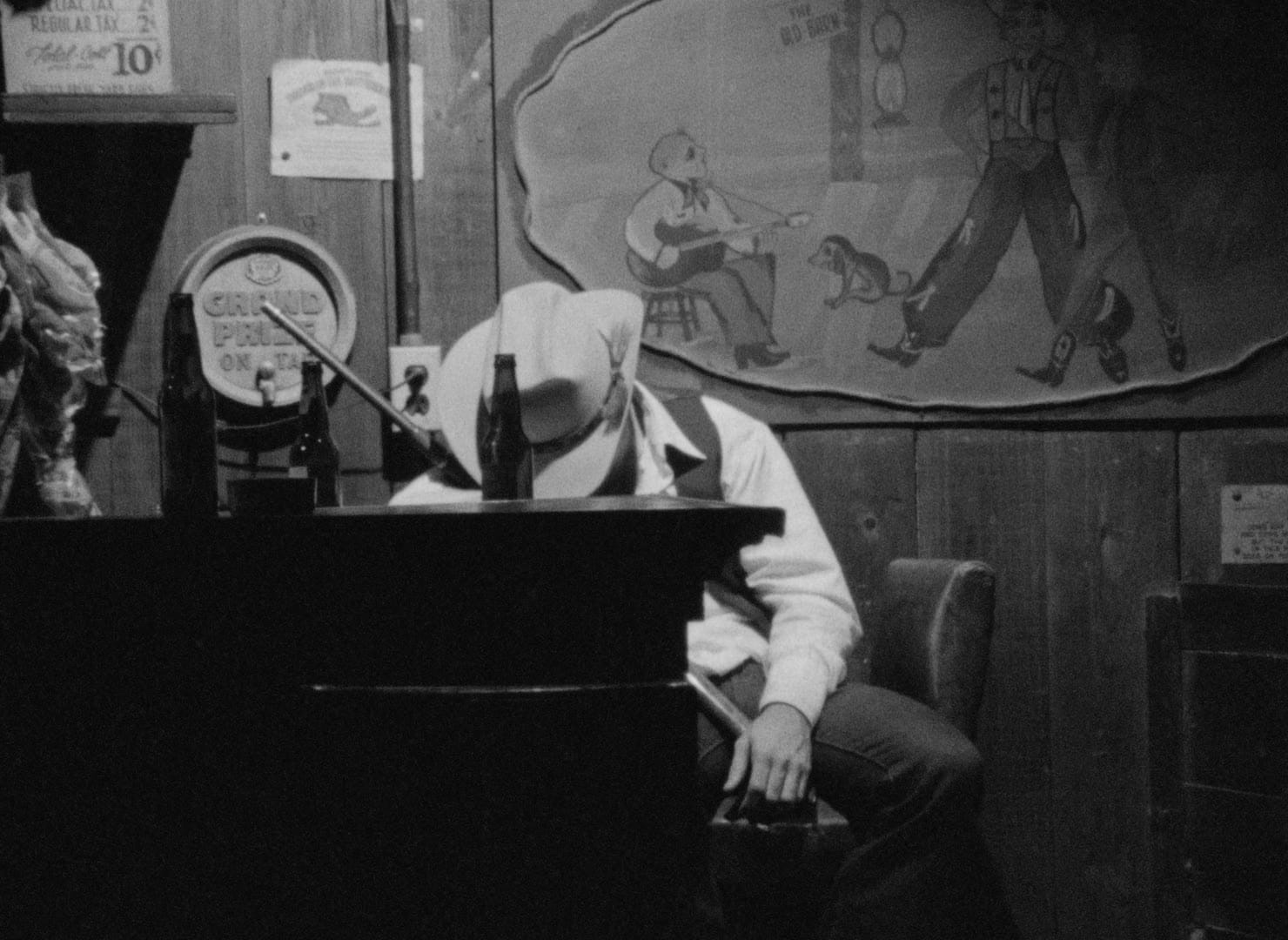Eagle Pennell, the Last Cowboy

In the cultural imagination, Texas is big: big sky, big oil wells, big egos. The former republic has an outsize sense of identity, and the pride that native Texans take in being from the Lone Star State may be the biggest thing it has going for it. But when you live there, particularly beyond the imposing metropolises of Houston, Austin, and Dallas, it’s a place that can often feel suffocatingly small, its towering skies and endless fields more like a smothering blanket than an endless canvas of possibility.
The pictures of filmmaker Eagle Pennell live inside that smallness. His Texas is not one of beautiful Big Bend canyons or waves of bluebonnet flowers, but one of cramped truck cabins, smoky juke joints, and mundane ranch houses. I was in high school when I first discovered his films, and even before watching them I was struck by his place of birth: College Station, same as mine, his body laid to rest in a cemetery not far from my childhood home. At the time, my burgeoning cinephilia was a means of escaping my isolated surroundings, best known to outsiders as the home of Texas A&M University and the Fightin’ Texas Aggies. College Station is not exactly a small town, but it never felt very big to me. As its rather clinical name implies, the city was born to serve a function—it was a college town and a train station before it became a place people actually called home. In my eyes, it was the most uncinematic place in the world. But my relationship to this town I considered a cultural desert changed when I discovered Eagle, a lost genius of independent cinema. I may still find College Station dull, but his films show that beauty can exist within the bleak tedium of repressive small-town life.
Pennell’s work is a gonzo brew of cowboy movie dreams and neorealist portraiture. His first three films—the short, A Hell of a Note (1977), and the features, The Whole Shootin’ Match (1978) and Last Night at the Alamo (1983)—form something of a loose trilogy, with actors Lou Perryman and Sonny Carl Davis playing good ol’ boys and partners in petty scheming. They are like a country-western Don Quixote and Sancho Panza, constantly walking off their manual-labor jobs because they don’t want to kiss up to the Man, engaging in hijinks and heavy drinking to distract from the grind of blue-collar existence. A Hell of a Note is a rough draft compared to the features. Its most impactful moments are grace notes of realism: an extended shot of Perryman’s character picking the label off an empty beer bottle, an old man counting the train cars that go by. There is as much contained in the way someone says “goddamn” or “shit” as there is in the image itself.
A Hell of a Note quietly demonstrated the cinematic potential of seemingly dead-end places, but The Whole Shootin’ Match rang out like a flare from the middle of nowhere, an example to other filmmakers who felt it was inconceivable to make work outside the industry hubs of Hollywood or New York City. Robert Redford credited the film with inspiring the Sundance Institute and with demonstrating the possibilities of regional cinema across the United States. The film wears its regionality like a badge of pride, and it possesses an unmistakable Texas twang, much like Eagle’s own voice.
College Station gave Eagle firsthand knowledge of scrappy working-class life in a place where there was little to do, but it was Austin where he developed a distinct style. Pennell settled in the emergent honky-tonk hippie and outlaw country scene, where singer-songwriters like Townes Van Zandt and Guy Clark defined a “progressive country” sound at venues like the Continental Club and Armadillo World Headquarters. Depending on whom you speak to, Austin of the 1970s was something like the down-south response to San Francisco’s Summer of Love. The city’s patron saint was Willie Nelson, who had fled the stuffy schmaltz of Nashville to do something stranger and more organic, and by bucking the country-music industry, he proved that you could create worthwhile art on your own terms and in your own space and still go platinum. The Whole Shootin’ Match had the same effect. It encouraged independent filmmakers around the country, as well as fellow Texans like Richard Linklater—a clear descendent and vocal acolyte of Eagle’s work.





